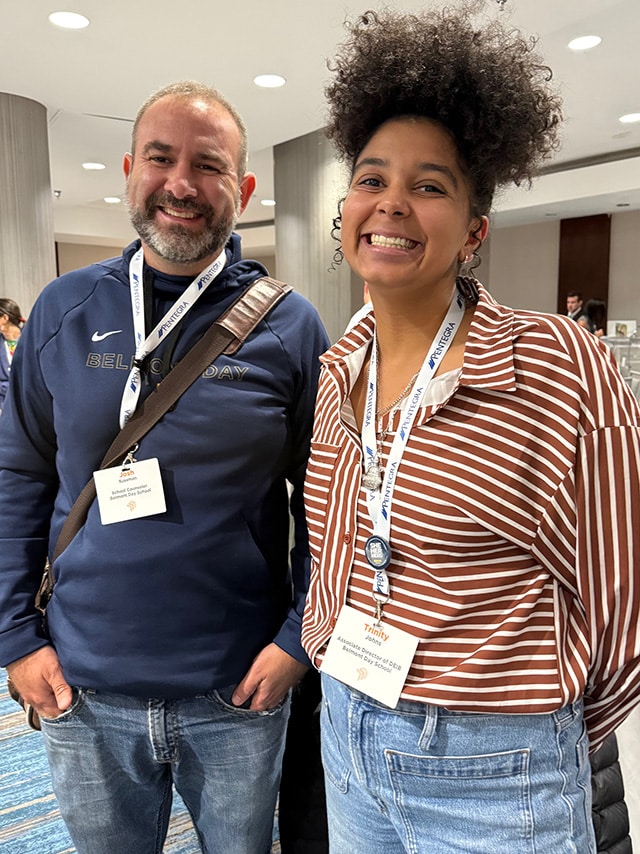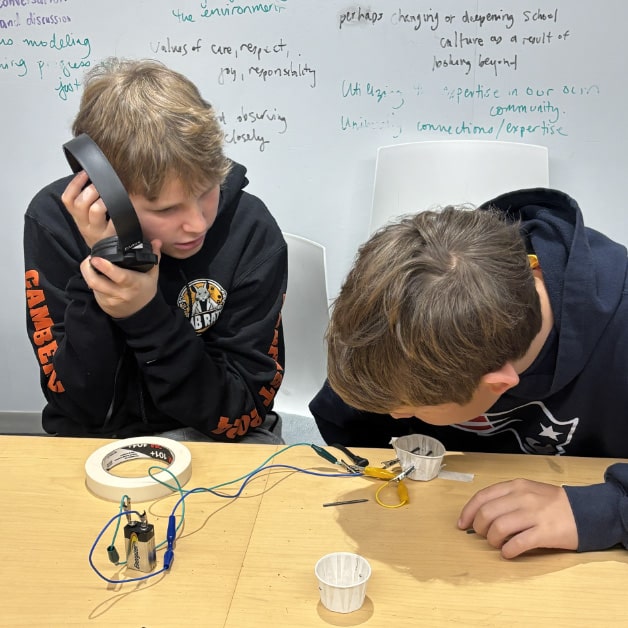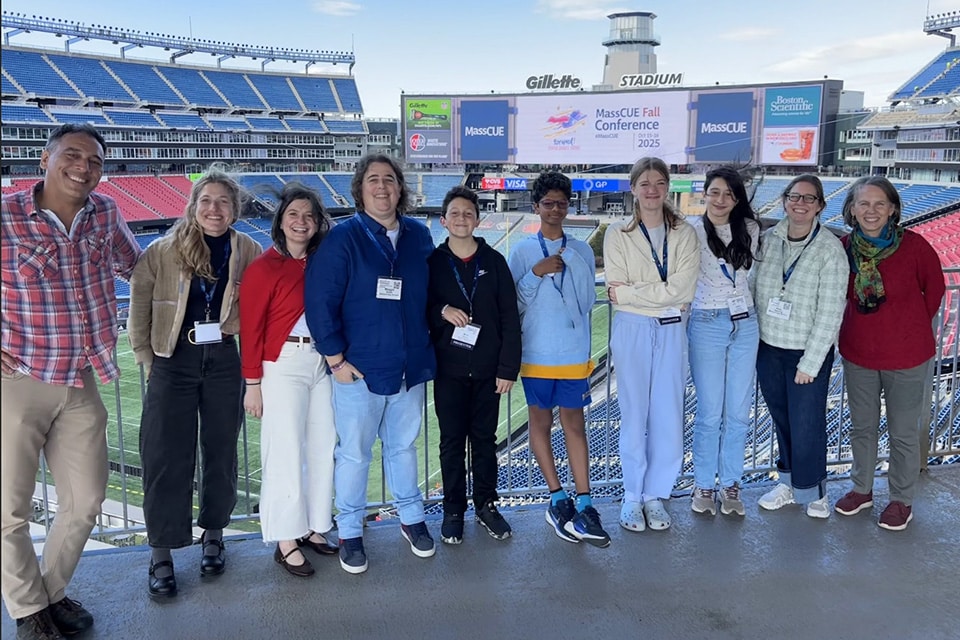Pre-kindergarten: Into the Woods …
In pre-kindergarten, we have always viewed the surrounding woods as an extension of our classroom. This year, in particular, we are excited to spend additional time exploring and discovering the woods and we have visited on a daily basis. For many reasons, the woods are the perfect backdrop for authentic learning, problem-solving, and play for young children. We have explored trails, visited “nature’s playground,” woven our way through a rock maze, and climbed higher than we thought possible.
This year, we are also exploring the role of emergent curriculum in our program. How do the children’s interactions with the environment provide an opportunity for further exploration, purposeful learning, and application of foundational academic and social skills? Already we know how engaging this can be.
During a recent trip to “nature’s playground,” a group of children noticed pieces of bark that had fallen off a downed tree. The group wondered aloud, compared the pieces, and even attempted to remove additional pieces. Returning the next day, students continued their exploration, found new pieces, and worked together to carry a large piece of bark back to our classroom.
The following day, we set out to collect as much bark as we could carry back to the room. Students explored how bark can be used as a building material. They balanced, stacked, and arranged the bark to create small creations. Pinecones, rocks, and tree blocks were also provided. At first, they were unsure how to build with these natural materials, as they looked different from the building materials they had been previously provided. We watched as students navigated this new experience—they made observations, shared ideas, and problem-solved when their bark creations fell apart. This is just the beginning of how a simple discovery has sparked an investigation of trees, bark, and working with natural materials. We look forward to sharing where this journey takes us.
– Kate Oznick, pre-kindergarten teacher
Seventh Grade Rides the Wave
In seventh grade, students are investigating the question, “How does a magnifying glass work?” We started this investigation by looking at the properties of visible light. In order to do this, students first did “the wave” in class. This allowed us to better understand the scientific definition of a wave. Next, we used Slinkies to model light waves. With the Slinkies, we discovered properties of waves such as the relationship between energy and amplitude, the relationship between wavelength and frequency, and what happens when a light wave hits a reflective surface. Finally, we related these properties to light and discussed how different colors are made up of different wavelengths/frequencies.
– Leal Carter, grade 7 teacher and adviser
Ensembles: Orchestra Gives Us “Simple Gifts”
The Belmont Day School Orchestra is back in action this fall, learning and performing some familiar songs. A staple for the orchestra through the years is “Simple Gifts,” an American Shaker Hymn. The Shakers were a religious community that flourished in the United States during the 18th and 19th centuries and composed thousands of songs, of which “Simple Gifts” may be the most famous. The song has been adopted by many others, most famously used by the American composer Aaron Copland (1900-1990) in his ballet, “Appalachian Spring.”
It is a Belmont Day School Orchestra favorite and we thought it would be a lovely way to come together and begin our new school year!
Click here to watch the video of their performance.
– Meghan Carye ’91, strings teacher and orchestra director
Arts Update: Eighth Grade Explores Wire Frames and Word Art
In their art intensive, eighth graders are taking on a number of interesting artistic challenges. The first lesson they’re on involves platonic solids and making wireframe examples. Students are also drawing using word art symmetry to create pictures that include a word that was rotated eight times around the center.
– Bill Smith, woodworking and 21st century skills teacher



